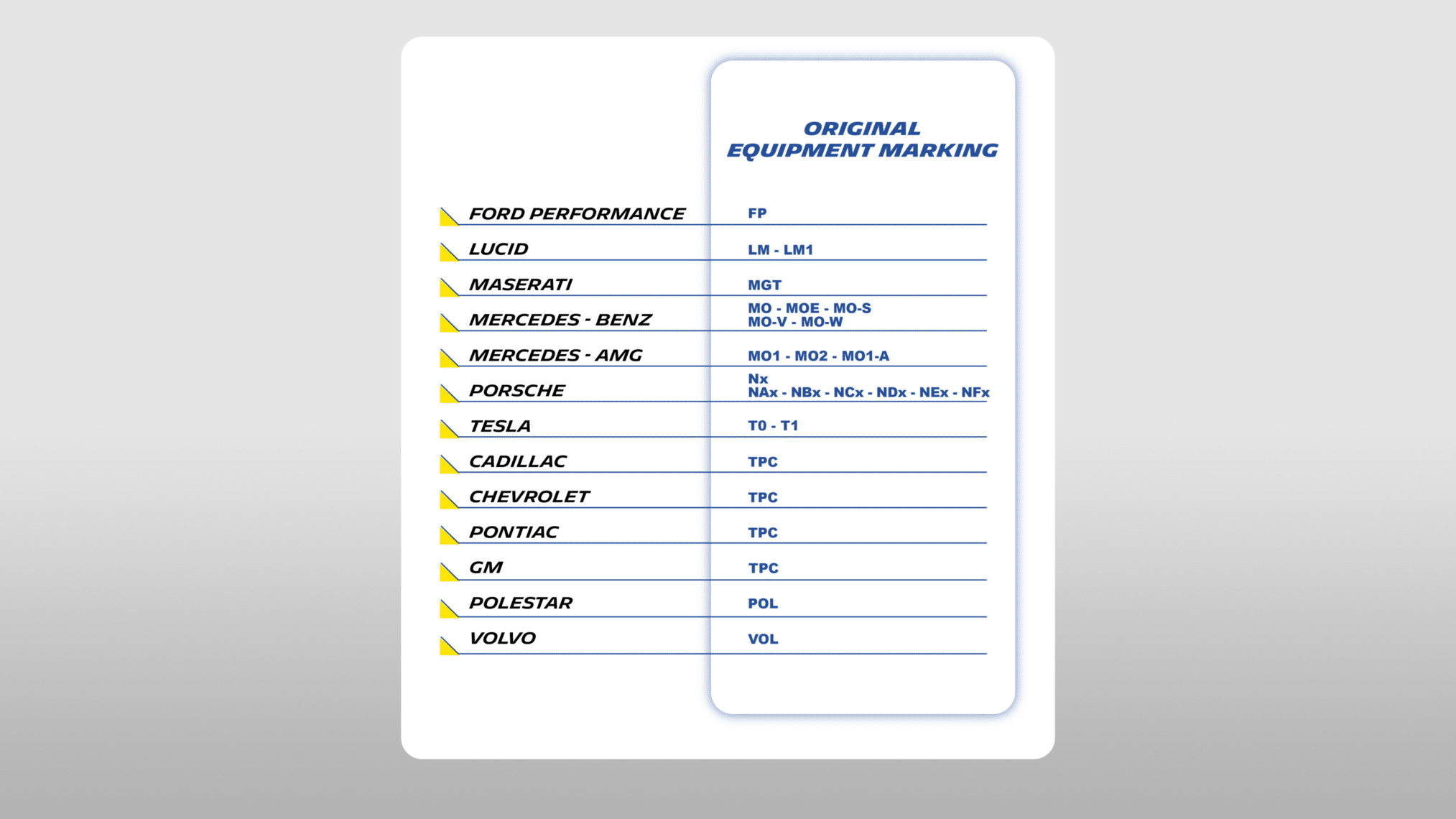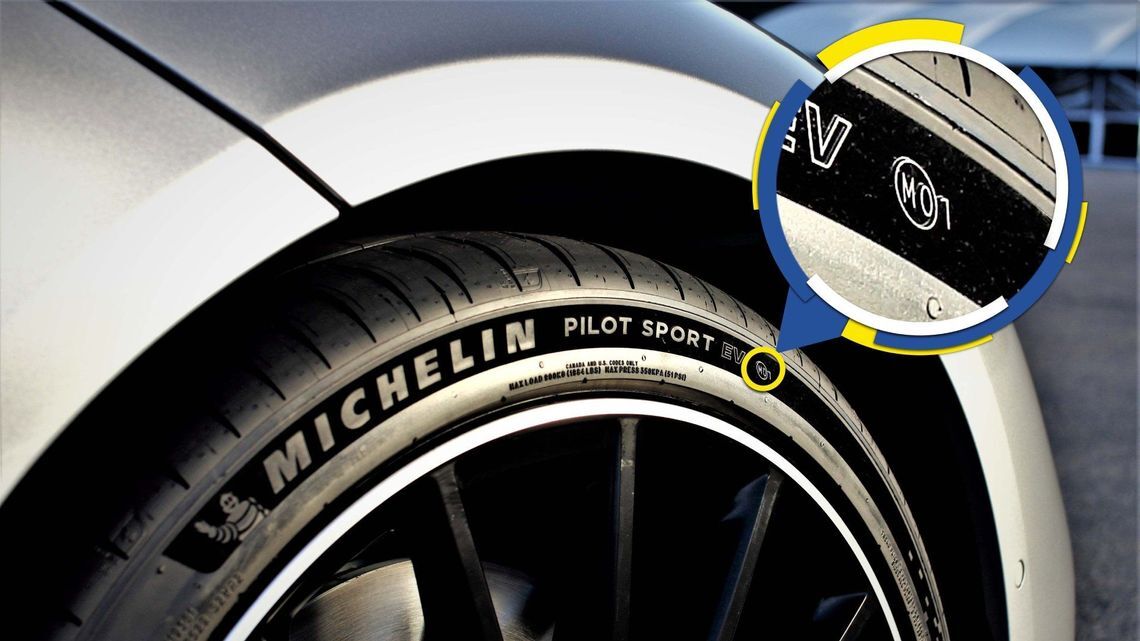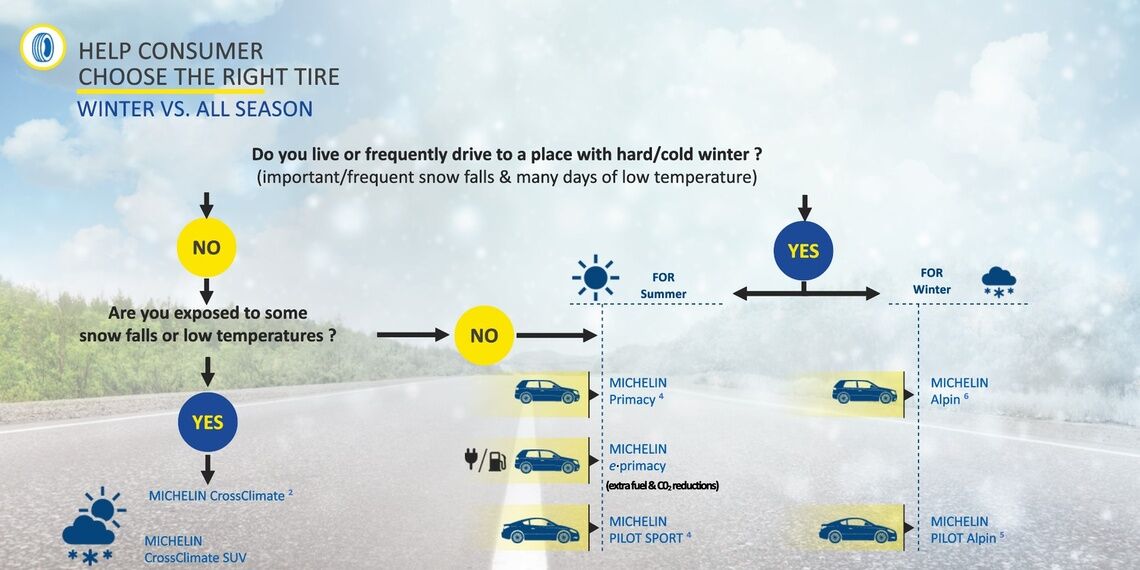Observe the dimensions indicated by the manufacturer
This is the very first criterion to consider when choosing tyres for your car.
As a tyre does not have a standard size, you must first identify the tyre sizes that are compatible with your vehicle before making your choice according to the other criteria that we will explain below.
Where can I find the tyre sizes for my car?
Look at the sidewall of any one of your tyres and note the numbers and letters on it.
This information will help you find the tyres that fit your car.
Here is an example of the complete dimensions of a tyre: 255/55 R17 72H
You can also find the tyre sizes in your driver or passenger door
Tyre sizes are also listed in your vehicle's owner's manual (which you should find in the glove compartment). These documents usually contain all the information relating to your tyre size and specifications, as well as the appropriate tyre pressure.
What do these letters and numbers mean?
Tyre Width or Section Width : (Example : 255)
Tyre width in millimetres is measured from the widest point of a tyre’s outer sidewall to the widest point of its inner sidewall.
Aspect Ratio : (Example : 55)
Aspect ratio is the relationship between a tyre’s sidewall height and the tyre's width. The lower the ratio, the smaller the sidewall height, which means better cornering but a rougher ride.
Construction : (Example : R)
This indicates the tyre’s internal construction. They can be R (Radial) like most tyres, or D (Diagonal construction) or B (Belted).
Wheel Diameter : (Example : 17)
The number is in inches and indicates the diameter of the wheel on which the tyre is designed to fit.
Load Index : (Example : 72)
This indicates how much weight the tyre is certified to carry at maximum safe inflation. The numbers refer to a chart that specify the load capacity that the tyre can carry.
For example, 72 = 355 kg.
You can find yours in the load Index chart :
High load Capacity tyres (HL tyres)
HL tyres are designed to support the weight of Electric & Hybrid vehicles. They allow the use of the same tyre size but with higher load carrying capacity.
You can recognise a HL tyre by the HL prefix located at the beginning of the tyre size markings
What are OE tyres?
OE stands for “Original Equipment”, meaning that the tyres were approved by your vehicle manufacturer to be fitted as standard on your vehicle.
Some vehicle manufacturers, such as Audi, BMW, Mercedes and others, equip their vehicles with tyres that are specifically designed for their brand. These tyres have a special OE marking on the sidewall. In this case, MICHELIN recommends replacing the tyres on your vehicle with tyres with the specific OE marking.
Table of OE markings by vehicle brand:



Choosing tyres for my car according to my use and the conditions of use
Once you have the dimensions, there are three other criteria to consider:
- the climatic conditions in which you drive
- your driving style
- the type of vehicle (electric or thermic)
Climatic conditions :
The other criterion we recommend you take into account when choosing tyres for your car is the weather conditions.
How do I choose tyres for my car according to the climate?
- Opt for summer and winter tyres if you drive in a mountainous region exposed to severe winter conditions (snow, winter, ice) for several months of the year and temperatures below 7°. If your winter conditions are more severe, see our article "How to choose a winter tyre?"

- Opt for all-season tyres if you live in a region with less severe winters with occasional snowfall.
- Opt for summer tyres all year round if you drive in southern European regions with mild winters (temperature over 7°C, no snow).
Your driving style :
To make sure that you enjoy your drive, look for tyres that match the way you like to drive.
If you like a quiet comfortable ride :
Look for tyres that specifically mention comfort, smooth ride, or low road noise. Generally speaking, touring tyres with lower speed rating (S, T or H ratings on the sidewall) are optimized for more comfort instead of more speed – it's recommended to never fit a tyre with the speed rating lower than the one specified by the manufacturer of your vehicle. Also, avoid aggressive tread designs – they may look cool but can generate lots of road noise.
Our MICHELIN Primacy 4⁺, for example, would be a good choice.
If you like to feel every curve :
Look for tyres that mention great handling or steering precision. These are often called high-performance tyres and have higher speed ratings, meaning that they are optimized to provide better control and a stiffer, more precise ride.
Our MICHELIN Pilot Sport ⁵, for example, is suitable for this style of driving.
The type of vehicle (electric or thermic)
More and more electrically powered vehicles are being introduced to the market. Specific tyres are now offered because they are designed for the particular characteristics of these vehicles. Tyres with low rolling resistance, for example, are suited to maximise battery range. This applies to our MICHELIN e·Primacy and MICHELIN Pilot Sport EV tyres.
Although the MICHELIN e·Primacy is not specifically designed for electric vehicles, it is particularly well suited to them because of its ability to offer low rolling resistance. The MICHELIN Pilot Sport EV is more suitable for "sporty" electric vehicles (e.g. Porsche Taycan, Tesla Model Y, etc.)
Choosing tyres for my car using the European tyre label
To help you choose the best tyres for your car, you can also use the labelling system set up by the European authorities, which allows you to highlight certain tyre performances, in particular wet grip and energy efficiency, with a grade ranging from A to E. See our article on the European tyre label :
A tool to help you choose the best tyres for your car
This tool will help you to choose the best suitable tyres from the main MICHELIN offers available, according to the seasonal criteria mentioned above.

For example, if you have a family car such as a Renault Scenic and drive in a mountainous region, you will be alternating summer and winter tyres.
In this case, you can choose MICHELIN Alpin ⁶ for winter and MICHELIN Primacy ⁴ for summer.
Addressing key questions
Discover why selecting the right tyres matters, the key steps involved, and how to ensure your vehicle is equipped for safe and efficient driving. From understanding tyre sizes and knowing when to replace them, to comparing brands and choosing the right type for your needs, this guide helps you make informed decisions with confidence.
FAQ about choosing the best tyres for my car
Finding your vehicle's correct tyre size is straightforward with the right approach. Start by consulting your vehicle handbook, which contains the manufacturer's recommended tyre specifications. You'll also find size markings clearly displayed on your tyre sidewalls. The size codes indicate width, aspect ratio, and rim diameter. For complete accuracy and peace of mind, use our online tyre finder tool, which provides precise tyre recommendations tailored to your specific vehicle model.
Regular tyre inspection ensures optimal safety and performance. Check your tyre tread depth by looking at the tyre tread wear indicators, the small, raised bars of rubber built into the grooves of a tyre's tread. When the tread surface is level with the indicator, the tyre should be changed. Or, you can check your tyre tread depth using a coin by placing it inside the tread. If the frame around the picture is visible, you've reached the legal minimum; it's time to replace your tyre!
Examine your tyres for visible damage, including cuts, cracks, or sidewall bulges, which compromise structural integrity. Remember that tyres naturally degrade over time, so it’s recommended that you replace them after 10 years, regardless of appearance, as rubber compounds can deteriorate even with minimal use.
Tyre performance varies significantly across brands and models, by grip levels, durability, and fuel efficiency ratings – areas where Michelin's advanced engineering delivers exceptional results. Tread patterns are specifically designed for various driving conditions, which affect traction and handling in different environments. The prices of tyre brands and models can reflect different factors and features, including tyre size and specifications of a particular range. The quality of the tyres you choose determines both longevity and overall performance over time. MICHELIN tyres are designed to offer the best set of performances, from the first to the last mile.
Consistency is crucial for maintaining balance and ensuring safety. It’s generally recommended to fit the same tyre type across all four positions on your vehicle, whether it’s a summer, winter, or all-season tyre. You can fit different makes and profiles of tyres on the front and rear of the same car. However, you must use two identical tyres on the same axle. Mismatched tyres can create unpredictable vehicle behaviour and compromise performance. Temporary spare tyres are an exception, which should only be used for short distances to reach the nearest garage following a puncture or damage.
Selecting appropriate tyres requires understanding your and your car’s specific needs. Consider your local climate, driving conditions, and vehicle usage patterns. Summer tyres perform best in warmer temperatures above 7°C. They offer excellent performance on vet and dry roads. Always verify your vehicle's specifications, including size, speed rating, and load index, to ensure the tyres you choose are compatible and provide optimal performance.
The best tyre choice depends on your car, where you live, and driving conditions. Summer tyres deliver peak performance in warmer conditions, offering enhanced grip and fuel efficiency.


